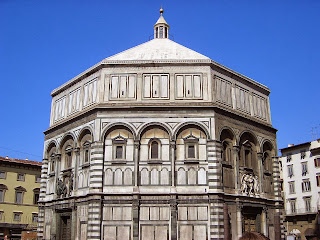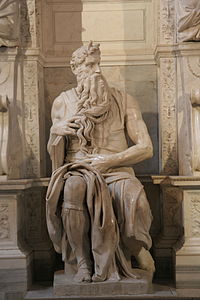This may be cheating a little because I talked about this piece in class but, you only live once, right?
The origins of this piece are disputed. Among these disputes is the original title of the piece, however, it is commonly referred to as "La Primavera" and "The Birth of Spring". From what I gathered, it is believed that this piece was probably created for the marriage of the cousin of Lorenzo d'Medici,
Lorenzo di Pierfrancesco, around 1478. In class, I brought up the idea that art of this time has some story or history beyond the piece itself, meaning that often there was an event or commissioning that the piece was specifically made for. In this case, it was to create a bond between the Medici and the Appiano, a wealthy family with ties to the mining business- of which Lorenzo d'Medici sought after.
La Primavera: Botticelli
c. 1478
The allegory of this painting, like most of its aspects, is also disputed among scholars. However, the commonly corroborated analysis is the one that I shared in class, that this painting depicts an allegory of marriage. What's interesting about this piece is that it depicts a pagan scene- full of Roman and Greek figures of mythology, but is set up very much like in ecclesiastical depiction of Mary. This painting embodies the spirit of the Renaissance in that Botticelli is bringing back to life the stories and figures of antiquity, while at the same time placing them in a relevent sacred context. If you notice, the figures are parted just so in order to make Venus the subject of your eye. Also, Botticelli has parted the branches behind her in a manner that gives her almost a heavenly glow or a halo- similar to what you would see in a depiction of Mary. As I mentioned in class, this depiction of Venus is drastically more prude than her typical sensual, nude poses. Here, she represents balance between wild and tame love and takes on a much more "motherly" Mary-esque role.
Refresher: the pagan characters that are represented are (from right); Zepherus, a wind god, Chloris, a nymph who then turns into Flora, goddess of Spring, then Venus, goddess of love, Cupid (above Venus), Venus' mischevious son, the Three Graces, representing the feminine virtues of Chastity, Virtue and Love and Mercury, messenger of the gods. They tell the story of the trials and tribulations of love from Zephyrus raping and happily marrying Chloris/Flora to the three graces and Mercury wildly basking in their unclaimed, raw desire.
Do you think that it was Botticelli's intention to reference the Madonna in this piece?
Sources:
Harris, Beth, and Steve Zucker. Botticelli's Primavera. video. SmarthistoryWeb. 19 Sep 2013. <http://smarthistory.khanacademy.org/botticelli-primavera.html? searched=primavera&highlight=ajaxSearch_highlight ajaxSearch_highlight1>.
Garcia-Fenech, Giovanni. "Spring Mysteries:Botticelli's Primavera." Artstor. N.p., 20 03 2013. Web. 19 Sep. 2013. <http://artstor.wordpress.com/2013/03/20/spring-mysteries-botticellis- primavera/>.
http://www.uffizi.org/artworks/la-primavera-allegory-of-spring-by-sandro-botticelli/


.jpg)






















